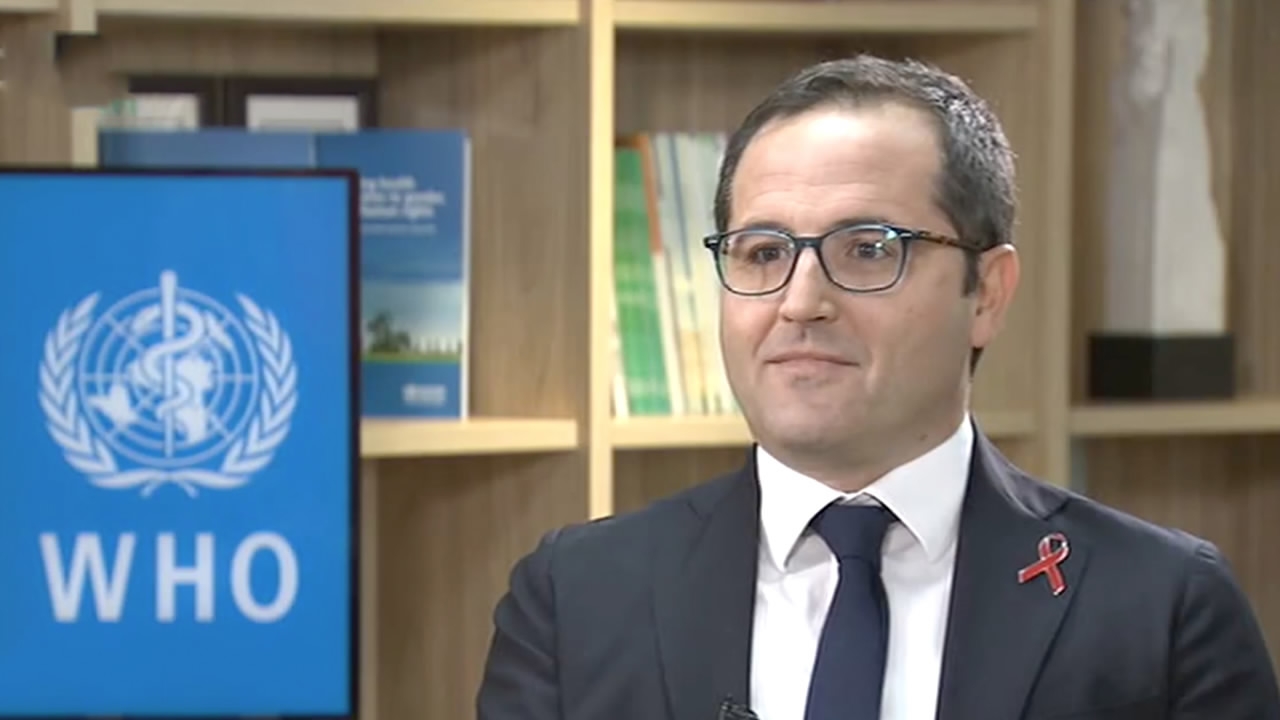
Health
20:13, 16-Jan-2018
WHO official explains flu outbreak and how you should defend
By Su Yuting

The Chinese National Health and Family Planning Commission has announced that there are now more flu cases than at any other time this winter.
The current strains of flu in China are mainly influenza A and B, whereas in previous years the flu season was predominantly due to influenza A. For more on that, our reporter Su Yuting sat down with Fabio Scano, Coordinator of Disease Control from the China Office of the World Health Organization (WHO).
Q: What are the possible causes of the influenza outbreak?
A: Influenza – and influenza outbreaks – are caused by viruses. Those viruses are transmitted through droplets in the air when an infected person coughs or sneezes. There isn’t just one virus that causes influenza – there are many different strains, which are constantly evolving. There are two important things to know about seasonal influenza.
First, for most of us, influenza is a temporary illness – it’s pretty awful for a few days and then we recover. We have to take additional measures to protect the very young and older populations, or other vulnerable groups, who have higher risks associated with influenza. But most of us can recover without serious complications.
Second, because the virus keeps adapting and changing, new versions of the virus can challenge our immune systems – we lack the immunity to quickly recover from this new version of the virus, allowing the virus to spread more rapidly and make more people sick. And as a result you see higher rates of infection, and in some cases hospitalization.
Q: The flu has been prevalent across China in recent weeks. The flu epidemic also struck the US. Are there any connections among influenza outbreaks throughout different countries?
A: Right now both North America and China are in the midst of influenza seasons. But there are many different strains of influenza viruses. In North America influenza A (H3N2) is the predominant virus, whereas in China it is a strain of influenza B, Yamagata-lineage viruses, which is the predominant strain.
So we have two concurrent outbreaks, here and in North America, but largely from two different strains. This illustrates the challenge in preventing seasonal influenza. Every year the public health community has to make a determination, a prediction, about which of the many different viruses will be predominant in the next flu season, and make flu vaccines that match that virus composition. It takes about 6-8 months to make the vaccines, so the recommendation has to be made long before influenza season starts. Because the viruses continue to adapt, there is sometimes a gap between what is anticipated and the eventual predominant strain.
Q: Could you please give us some suggestions on what prevention system should be established to contain the flu epidemic?
A: The most effective prevention is vaccination. Recent studies show getting your flu shot can reduce the risk of flu by about 40% to 60% among the overall population. However, because of the challenges we just discussed – of predicting half a year in advance which strains will be predominant and then producing flu vaccines to protect against those – some people wonder whether they should be vaccinated. Even if the vaccine is not perfectly matched to the predominant virus circulating at the moment, we still recommend the vaccine. The vaccine can reduce the severity of the illness and additionally there are still other influenza viruses circulating. Influenza vaccines can include protection against 3, 4 or up to 7 different strains, depending on the country. So it’s still recommended to get the vaccine, and absolutely if you are pregnant, for children or the elderly, people with chronic health conditions or health workers.
In addition to the vaccine, WHO recommends the following personal protective measures:
• Regular hand washing with proper drying of the hands.
• Covering mouth and nose when coughing or sneezing, using tissues and disposing of them correctly.
• Early self-isolation of those feeling unwell, feverish and having other symptoms of influenza.
Finally, if you do contract influenza, there are antiviral and medical treatments available. People from high risk groups who think they are infected should see a doctor and, if necessary, can be treated with the antivirus. In all cases, people with influenza should stay home in order to minimize the risk of infecting others.

SITEMAP
Copyright © 2018 CGTN. Beijing ICP prepared NO.16065310-3
Copyright © 2018 CGTN. Beijing ICP prepared NO.16065310-3